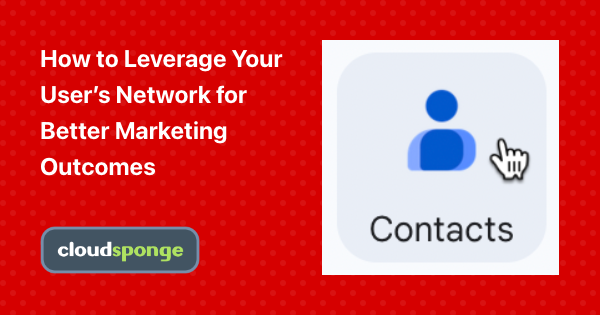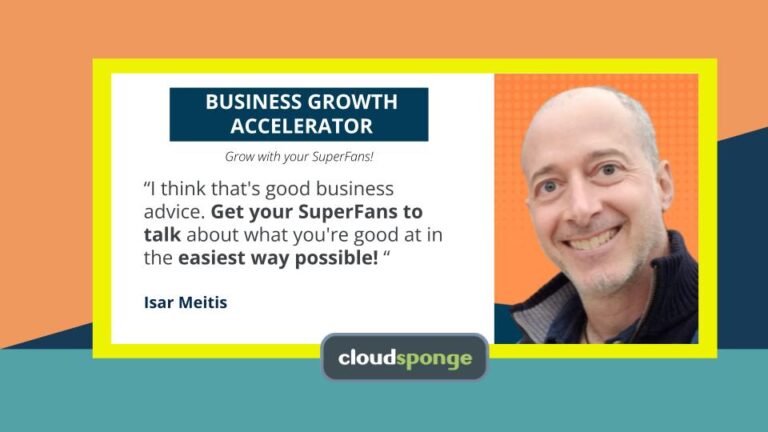You know, we’ve been talking about user activation a lot lately.
And for a good reason.
After all, let’s face it, there’s nothing harder to do than convincing a trial user to start parting with their cash.
(And nothing more depressing than seeing them leave without doing so…)
But did you know that the only thing that stands on the way to a better activation is an insight into your users?
Knowing why they signed up in the first place, or what problems they’re looking to fix with your app, could help you optimize the activation journey.
And boost conversions.
Greatly.
The thing is, no one gives you that information when they sign up.
But that’s just because you never ask!
And so, in this post, I’ll show you how to gather that insight through a super simple strategy – feedback loops.
Trying to overcome low activation? Then check out our ultimate guide to onboarding and activating new users.
But first…
Let’s look at a couple of brand messages
Here’s an email Drift shared on this page (note, it’s not theirs, but it’s darn good):
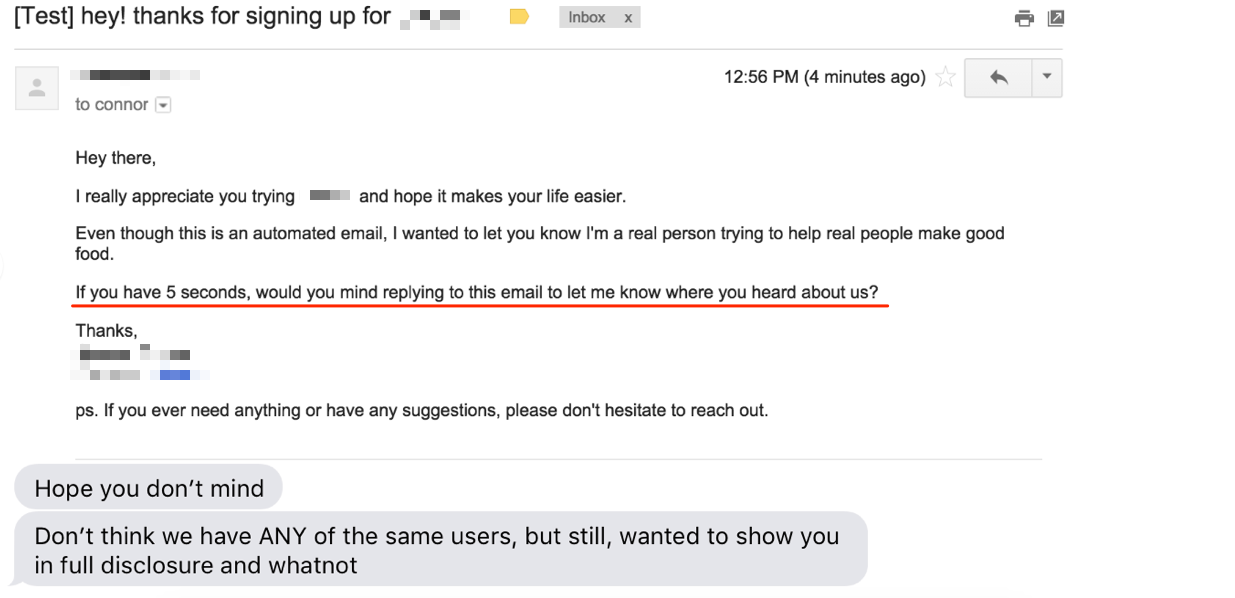
And here’s Drift’s email:
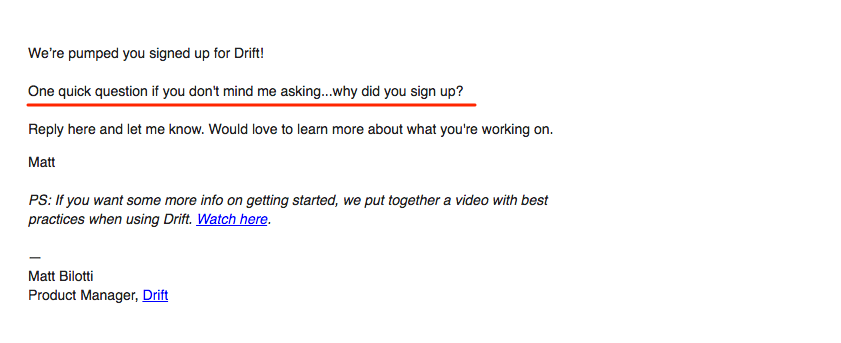
( image source)
Another example, this time an on-site feedback from YesInsights.
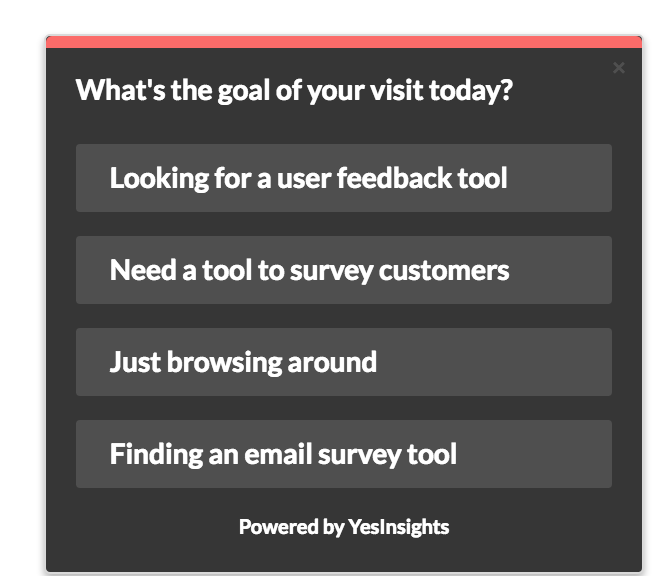
And here’s another one (disclaimer, this one is from my site)
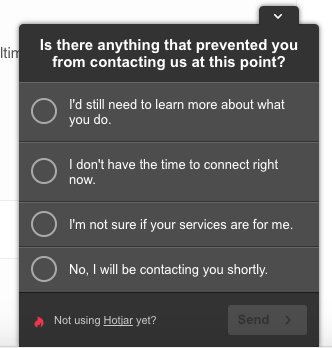
And can you see what all those messages have in common?
They ask users or website visitors about motivations behind their behavior:
- Drift, for example, wonders about reasons for signing up.
- My agency tries to understand why a visitor didn’t reach out to us, and so on.
In short, they aim to discover insights that would help these companies acquire and activate users better.
As Drift admit about their email:
“[…] the goal here is simply to get people to respond so we can start a conversation and learn more about them.”
And what’s more, they do it in a highly unobtrusive way.
The strategy all those companies employed is called feedback loops. It allows you to ask relevant questions during a person’s onboarding journey to gain insight that would help you convert them into paying customers.
And it works.
Now, naturally, I can’t share results from actual SaaS feedback loops for confidential reasons.
But let me show you the information I get from new customers as a response to my welcome email.
Welcome email:
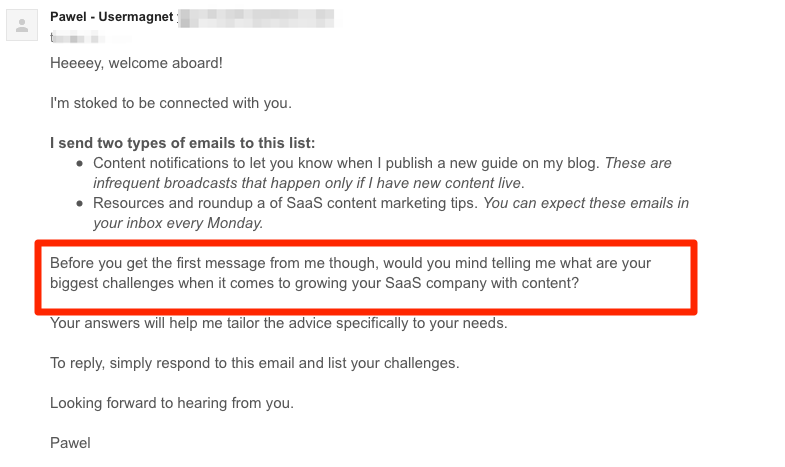
Response:

I’m sure you’ll agree:
Such feedback beats any assumptions I could have made…

That’s the power of feedback loops. They allow you to understand your users behavior, and use that knowledge to proper your activation (or any other aspect of your business, at that.)
But here, let me show you some more proof why you really need them.
How User Insights Drive Activation
Let’s not beat around the bush here:
The majority of your trial users never activate.
And there is plenty of stats to prove it.
According to Patrick McKenzie:
“40-60% of users who sign up for a free trial of your software or SaaS application will use it once and never come back.”
Lincoln Murphy calls 25% trial to paying customer conversion rate good.
(Which also means that, on average, 75% of trial users never convert…)
And as he adds (note, the emphasis in bold is mine):
“A Free Trial conversion rate of less than 25% for anything but the most horizontal, low-end, commodity B2B products is something that should warrant immediate attention.”
Bummer, right?
But how do you improve activation?
Well, we’ve covered a number of strategies already (you can read about them here, and here).
However, no matter which one you choose, the fact remains – you succeed only if you understand your users first.
And then, use that feedback to improve their experience.
After all, as SuperOffice points:
“68% of customers leave because they believe a company doesn’t care about them.”
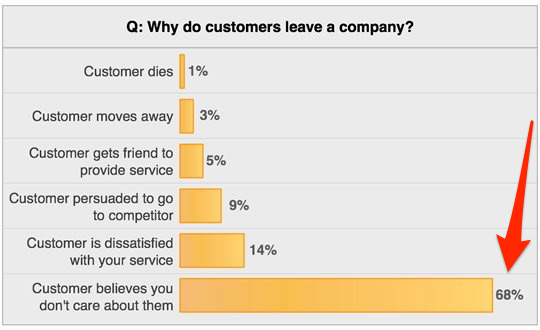
Enter Customer Feedback Loops.
As mentioned already, the greatest benefit of using feedback loops is the ability to gain relevant insight into what motivates your users.
And here’s how you could set up feedback loops for your SaaS.
Setting up customer feedback loops
#1. Ask a gentle question in the welcome email
When writing about using emails to activate users here on CloudSponge, I said:
“[A welcome email is] the most important email from the entire sequence. Why, because it’s the most read. Simply.”
And what goes with it, it offers the greatest opportunity to acquire customer insight, particularly relating to their reasoning for choosing your app.
In fact, that’s exactly what Drift and many other SaaS brands do.
Instead of filling in the welcome email with countless links to various resources, they ask trial users why they signed up.
Here, let me show you Drift’s email again:
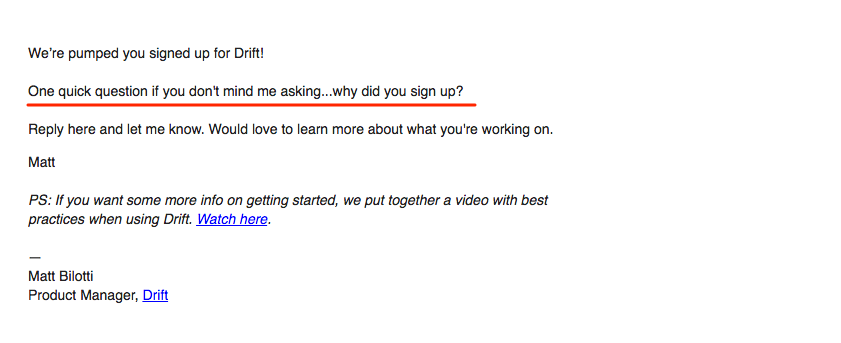
( image source)
And the beauty of this strategy is that implementing it requires nothing more than adding a single line of text to your existing email.
Cool, eh?
#2. Use an in-app survey
Fact: most of the time, we all dread filling in surveys.
Then again, we might complete one if it contains just a single question or all we need to do is tick a box.
And you can use that behavior to collect additional information about your users.
Use apps like Hotjar or Survicate to set up simple polls in-app, and gauge your users attitudes towards a specific problem or challenge.
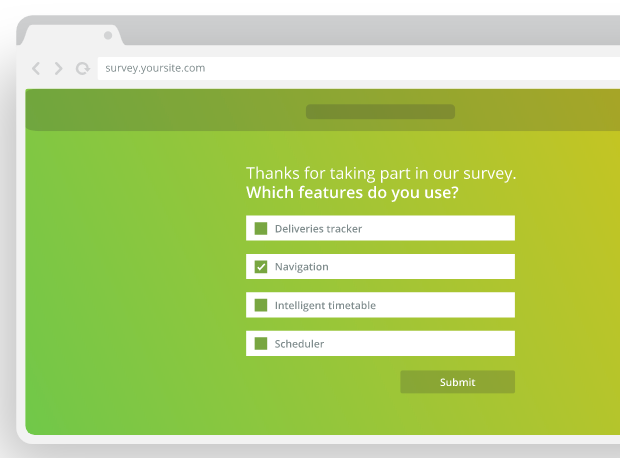
( image source)
#3. Make feedback a part of the signup process
Here’s a great story.
Twoodo requested every initial customer to fill in a short survey before being able to use their app.
In fact, as they admit:
“You would only get access to Twoodo if you filled out the questionnaire.”
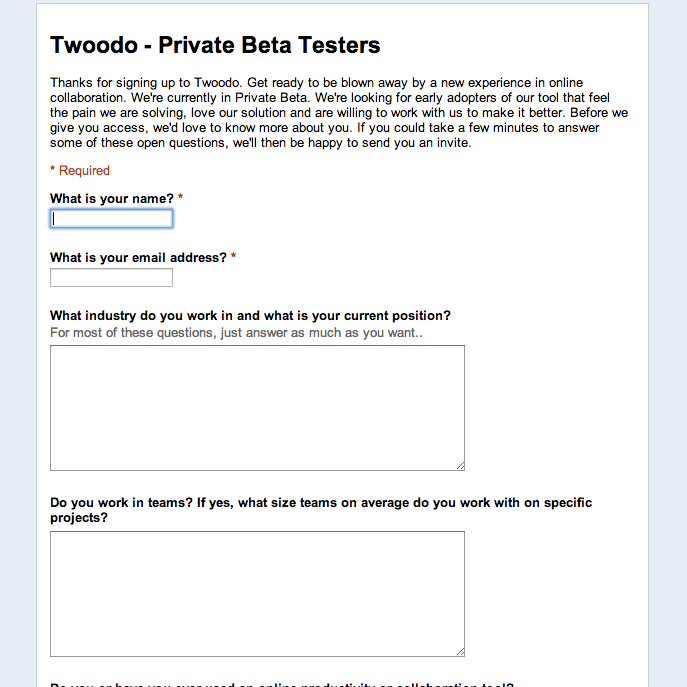
But I agree, such strategy could have reduced the number of trial signups initially. But as it turns out, half of trial users completed it.
And as Twoodo states:
“Not only was this additional validation that we were solving a real pain, but we got tons of invaluable information such as:
- the types of users that we were attracting,
- the size of their teams,
- their industry, the location,
- the tools they were using, their workflows,
- the pains that users were having with other tools,
- some initial insights as to the functionalities they were looking for.”
Awesome, right?
#4. Incorporate feedback into support interactions
Your customer success team plays a huge part in activation.
But they could, in fact, do even more.
For example, they could include questions relating to a person’s objectives in the product in their interactions.
And as a result, collect invaluable feedback that helps build a better image of your engaged customers.
Bonus: Incentivize the Feedback
Look, let’s not beat around the bush here: Feedback loops are a long-term strategy.
For one, they rarely deliver insight in bulk. Most of the time, you need to wait a while before you collect a significant number of responses.
This, however, doesn’t negate their effectiveness. It just means that if you seek results fast, then you might need to incentivize your users to share their story.
Dropbox, for example, used this strategy to boost feedback. Take a look:
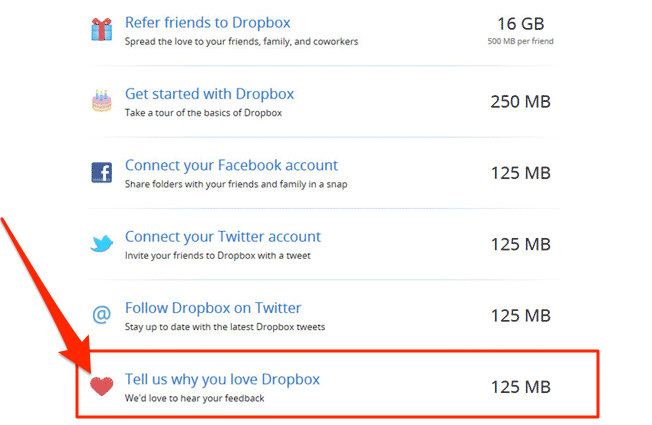
( image source)
The company offered additional storage for sharing opinions about their product.
Clever, huh?
Of course, you shouldn’t use this strategy for too long. For one, incentivized feedback is often of lower quality. After all, there is a chance that a person offered it only to receive the rewards.
Plus, they might get used to the idea of always getting something in return from you. And never offer any other insight otherwise.
Conclusion
Fact: Convincing trial users to start paying for your product is hard.
But it gets easier if you know why they signed up or what challenges drove them to seek your solution out.
And customer feedback loops help you gain such insight, unobtrusively, at that.

